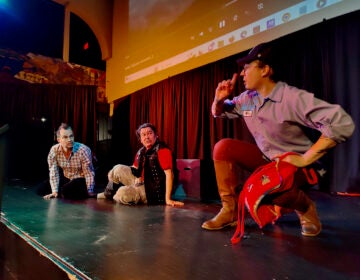Day of the Dead festival to honor victims of natural disasters
Penn Museum hosts Dia de los Muertos celebration with traditional music, food, and painted skeletons while remembering those lost to recent earthquakes, hurricanes, and fires.
-
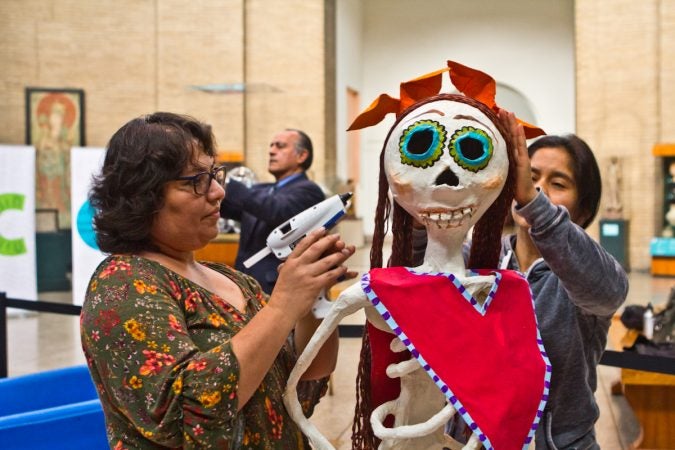
Artists Anna Palma (left) and Ivonne Pinto (right) work on the hair of a character for the Day of the Dead altar at the Penn Museum. (Kimberly Paynter/WHYY)
-
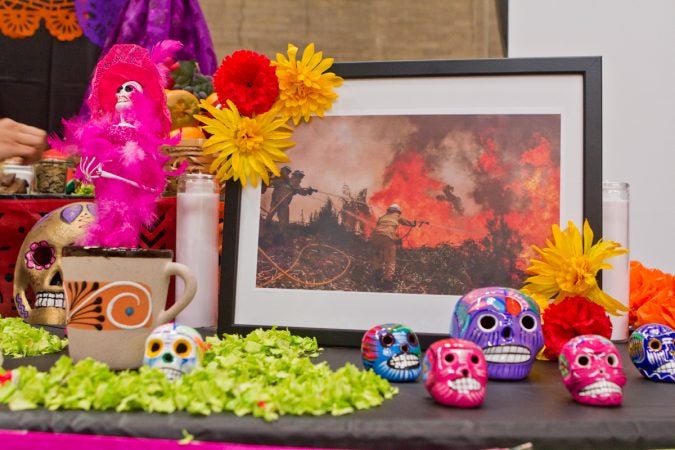
An image from forest fires to represent those killed in California is displayed on the 2017 Day of the Dead Altar at the Penn Museum. (Kimberly Paynter/WHYY)
-
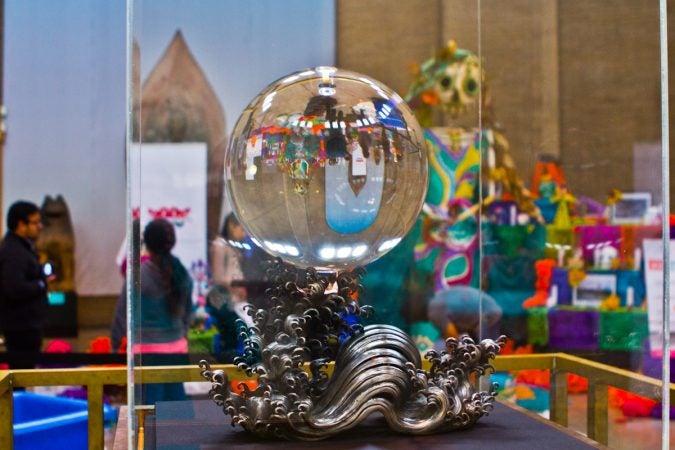
The Day of the Dead altar reflects through the Crystal Sphere on display at the Penn Museum. (Kimberly Paynter/WHYY)
-
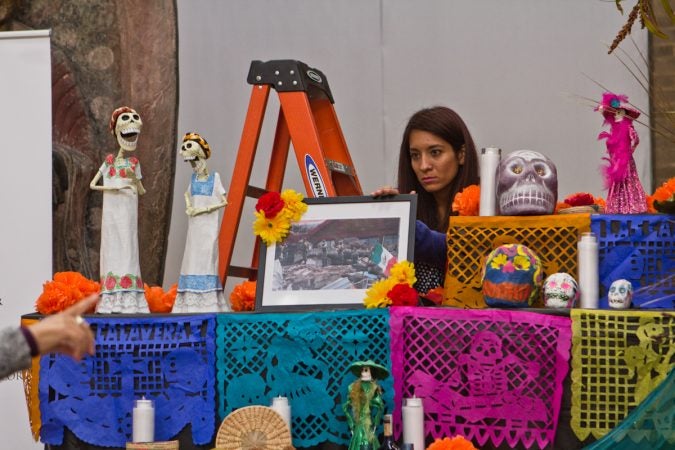
Ivette Compton, with Philadelphia’s Mexican Consulate, adjusts a photo of destruction from earthquakes in Mexico City. (Kimberly Paynter/WHYY)
-

A poster explains the significance of items on the altar. (Kimberly Paynter/WHYY)
-
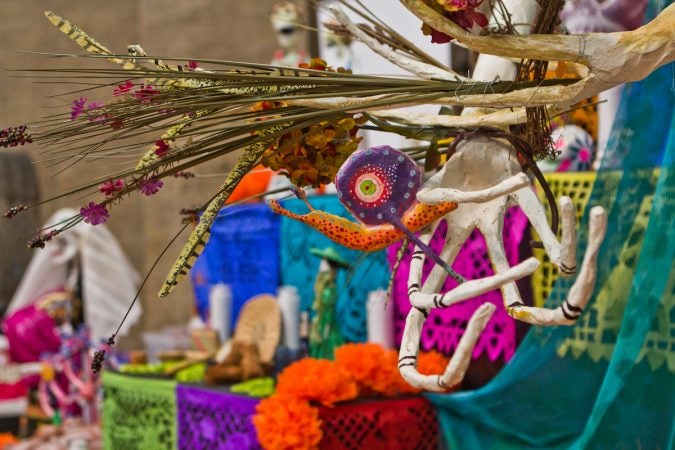
The central figure of the altar was created by artist Cesar Viveros. (Kimberly Paynter/WHYY)
-
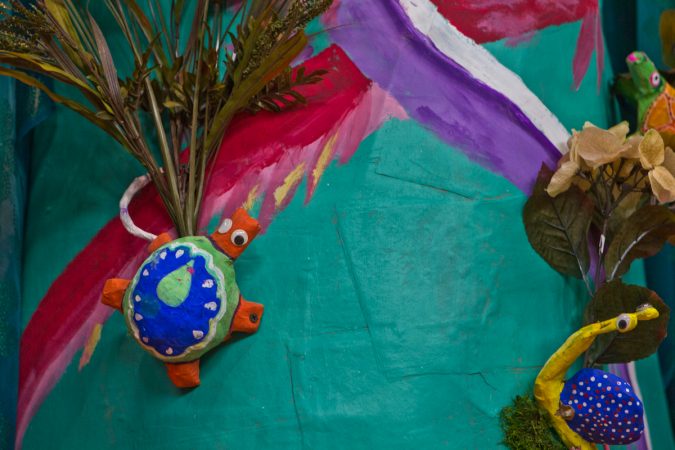
The central figure of the altar was created by artist Cesar Viveros. (Kimberly Paynter/WHYY)
-
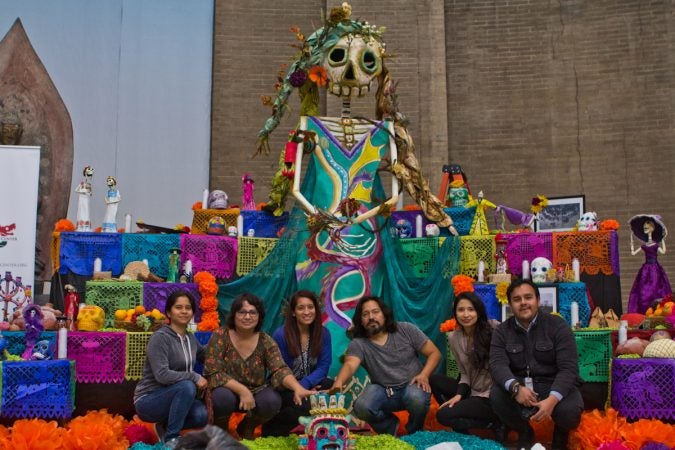
Artist Cesar Viveros (center right), coordinated the effort of his pupils and employees of the Mexican Consulate to create the altar. (Kimberly Paynter/WHYY)
-
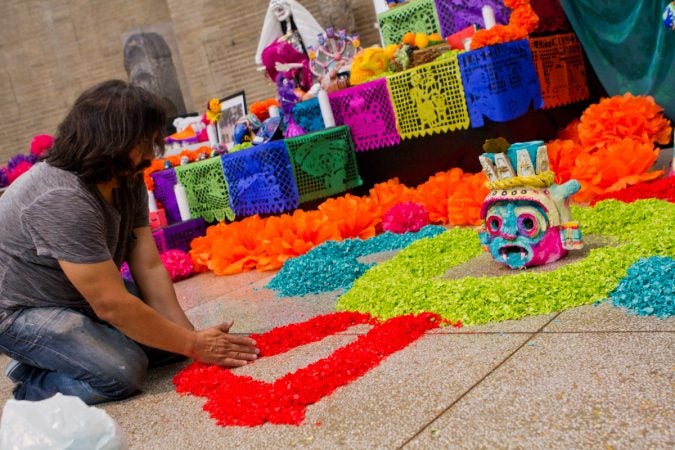
Artist Cesar Viveros arranges paper petals on the floor of the Day of the Dead altar. (Kimberly Paynter/WHYY)
-
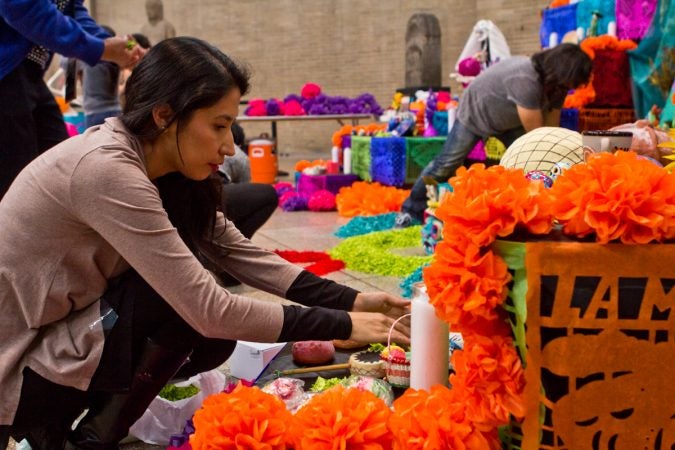
Virginia Rivera, with ether Mexican Cultural Center, arranges sweets on the altar. (Kimberly Paynter/WHYY)
-
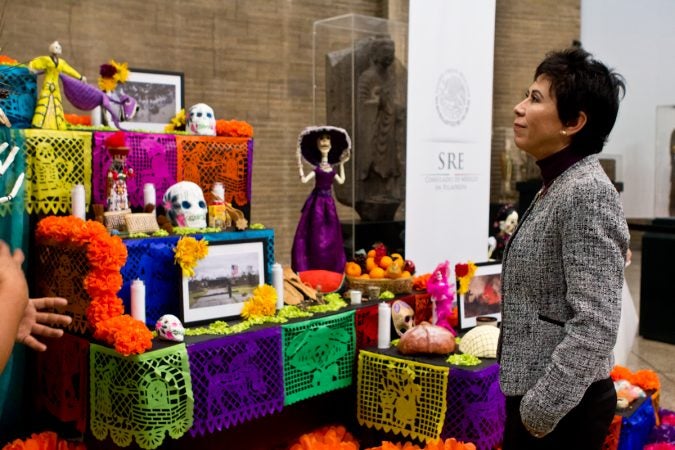
Alicia Kerber-Palma is the Head Consul of Mexico Consulate of Mexico in Philadelphia. (Kimberly Paynter/WHYY)
-
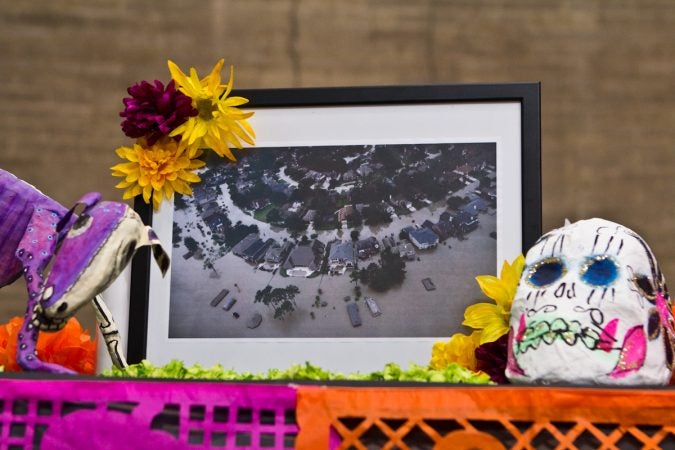
An image from Hurricane Harvey’s flooding is displayed on the 2017 Day of the Dead Altar at the Penn Museum. (Kimberly Paynter/WHYY)
-
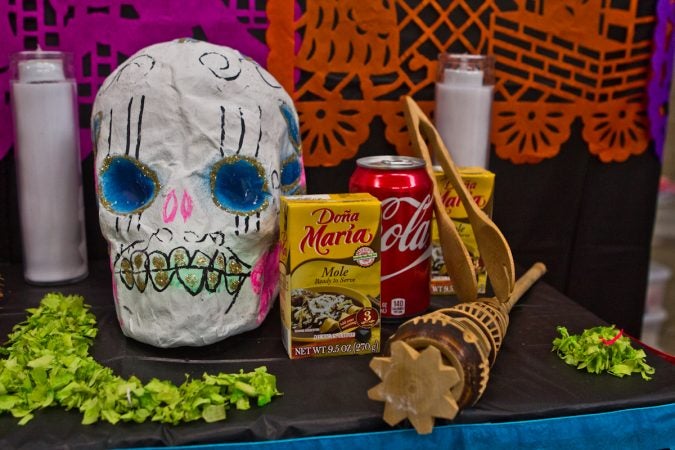
Treats are left for the deceased on the altar. (Kimberly Paynter/WHYY)
-
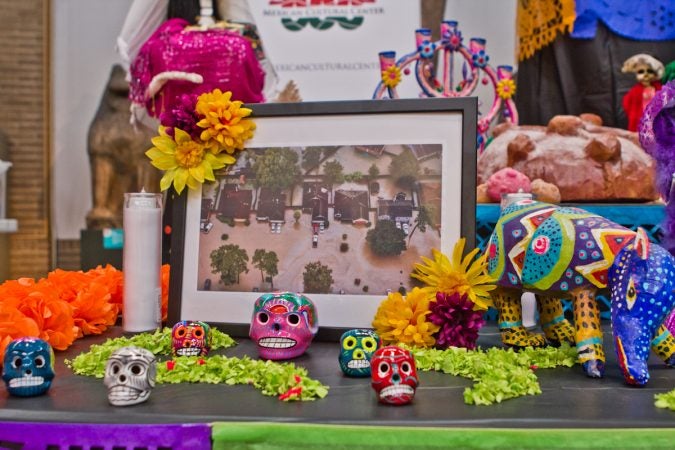
An image from Hurricane Harvey’s flooding is displayed on the 2017 Day of the Dead Altar at the Penn Museum. (Kimberly Paynter/WHYY)
-
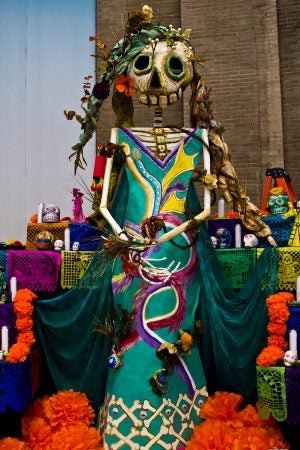
The central figure of the altar was created by artist Cesar Viveros. (Kimberly Paynter/WHYY)
The Mexican holiday Dia de los Muertos — the Day of the Dead — is celebrated every year at the University of Pennsylvania Museum of Archaeology and Anthropology. A festive altar is set up to remember the dead and to feed them.
This year, the museum’s public celebration Saturday afternoon will take on a somber note as visitors recall those lost in recent natural disasters.
Dia de los Muertos is a major Mexican holiday when it’s believed the dead return to the world of the living for one day. That may sound like a ghoulish celebration, but it’s a lively affair with lots of food, music, candy, and papier-mâché skeletons brightly painted and festooned with flowers.
For Cesar Viveros, a Mexican artist based in Philadelphia, the holiday evokes happy childhood memories.
“It’s so full, so alive, so colorful,” he said. “Even in the cemetery, they bring food and families. It’s often the only occasion they all get together, so you have your cousins all around. It’s a party.”
Since 2012, the Penn Museum has partnered with Viveros and the Mexican Cultural Center to build a large, temporary altar for Dia de los Muertos. Every year Viveros designs the altar with a particular theme, usually depicting a well-known person in Latino culture who had passed away that year.
Last year, for example, it was pop megastar Juan Gabriel, who died in August 2016 at age 66.
This year, the altar is dedicated to the hundreds of people who have died in the Central Mexico earthquake on Sept. 19 that killed almost 400 people; the devastating hurricanes that hit Houston and Puerto Rico; and the wildfires that just destroyed much of California’s Napa Valley.
The disasters affected so many people — so deeply and recently — the feelings are still raw.
“This year, so many sections and cultures and areas are unified in the pain,” said Rafael Utrera, president of the Mexican Cultural Center. “We all feel the same thing. We all miss the departed. It gets us together in a very human way, that we all feel.”
The altar at the Penn Museum has to toe a delicate line of being festive — as the holiday tradition demands — and somber. Viveros designed a 12-foot skeleton depicting Mother Nature, made of reeds and papier-mâché, as the central icon. The tiered altars flanking her are arranged with colorful skulls, paper flowers, and framed photographs of scenes of devastation from the various disasters.
Viveros wanted to convey nature as beautiful and generous, as well as cruel and merciless.
“There are so many ways we can enjoy life that the Earth can offer us. We take advantage of that,” he said. “On the other hand, it’s a destructive force. It’s so big, we cannot control it. We have to live by nature’s standards.”
WHYY is your source for fact-based, in-depth journalism and information. As a nonprofit organization, we rely on financial support from readers like you. Please give today.



